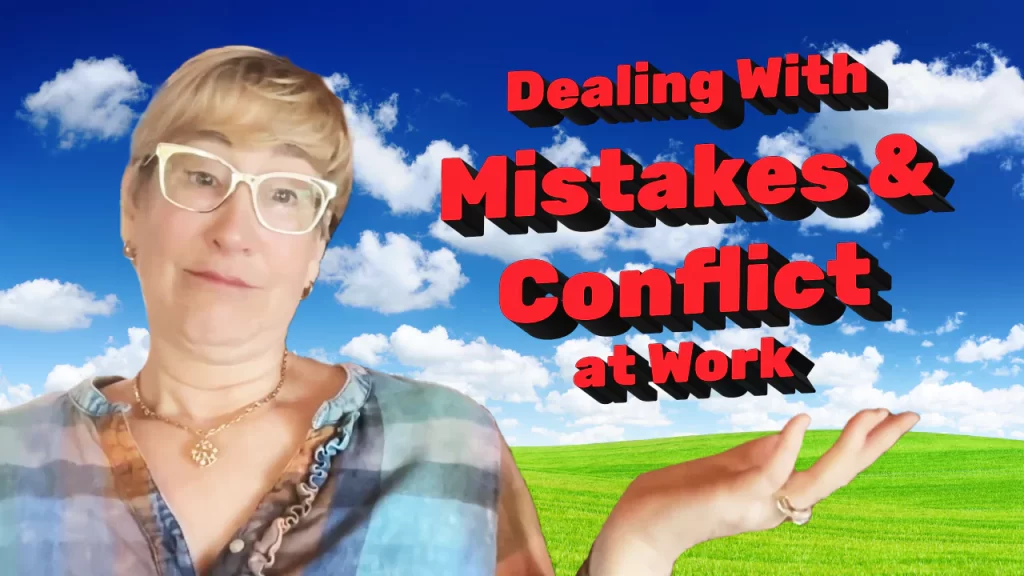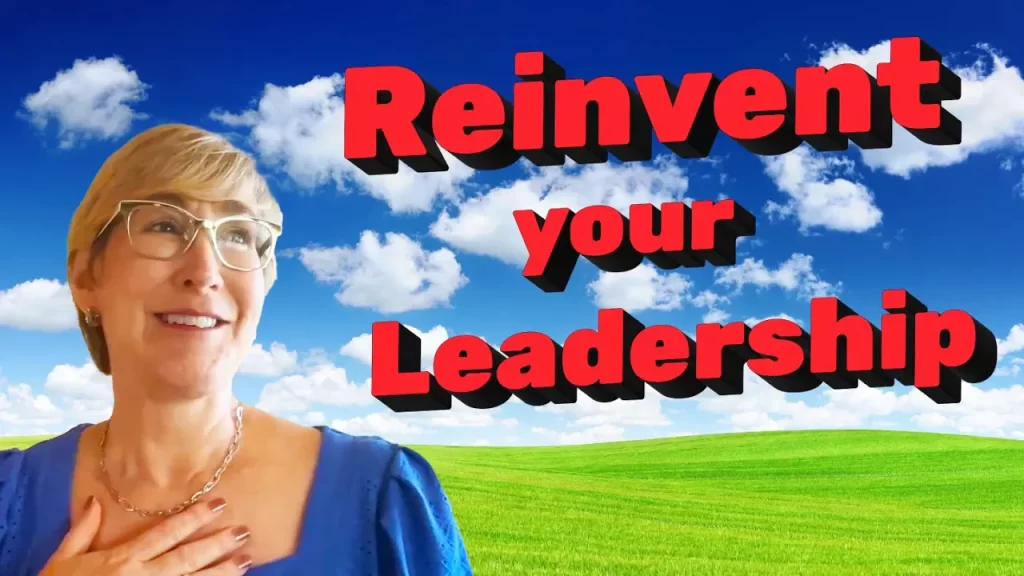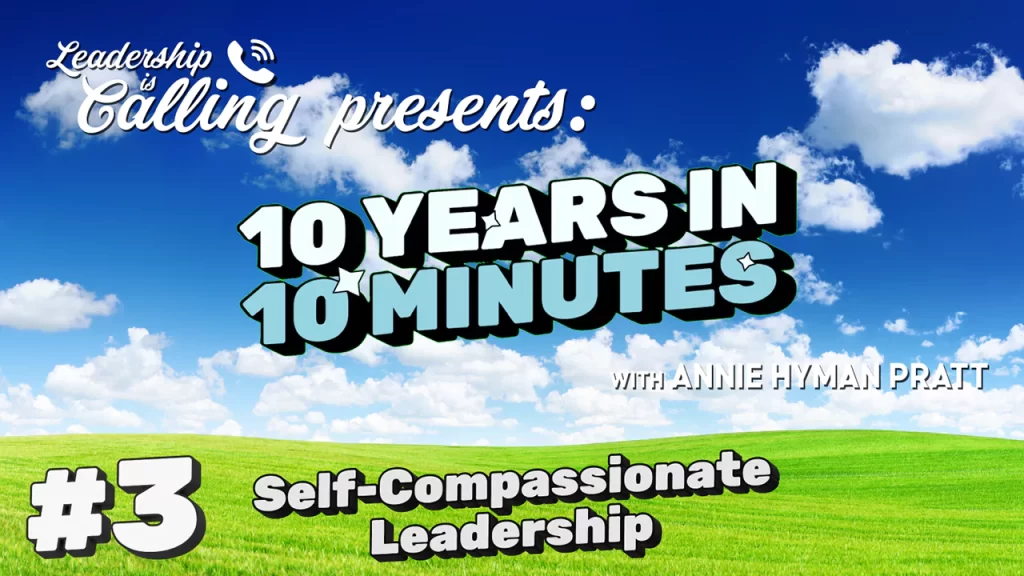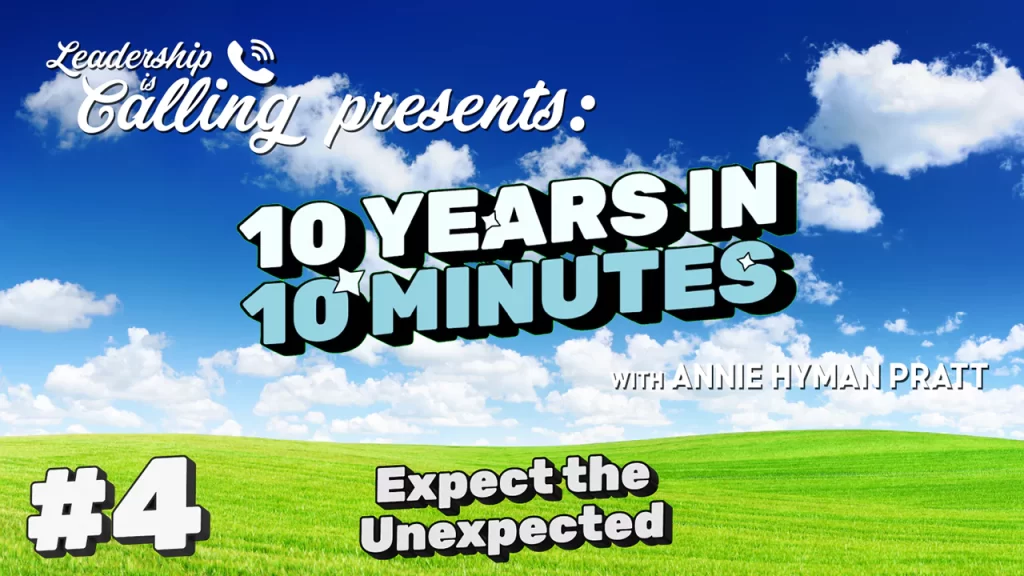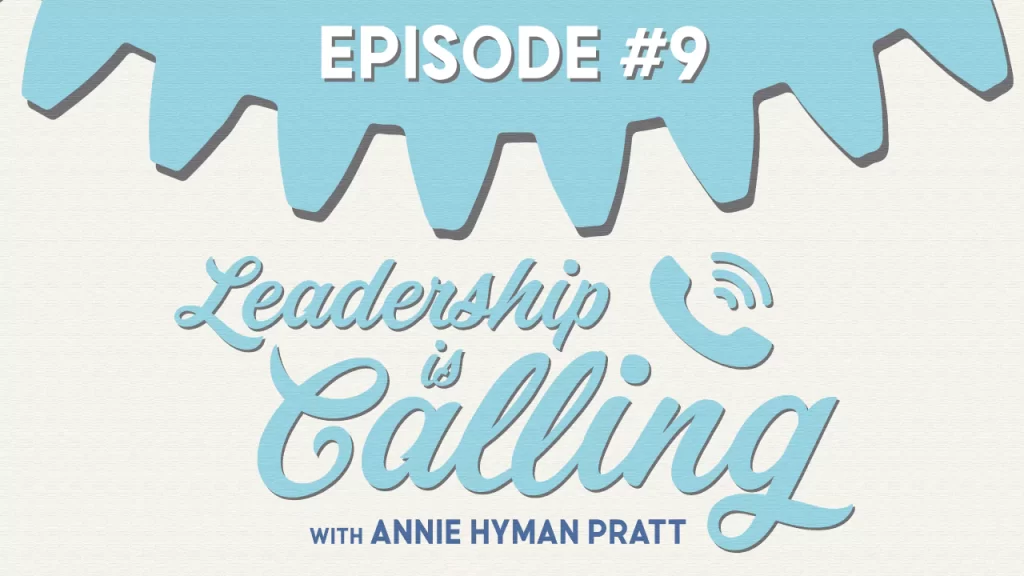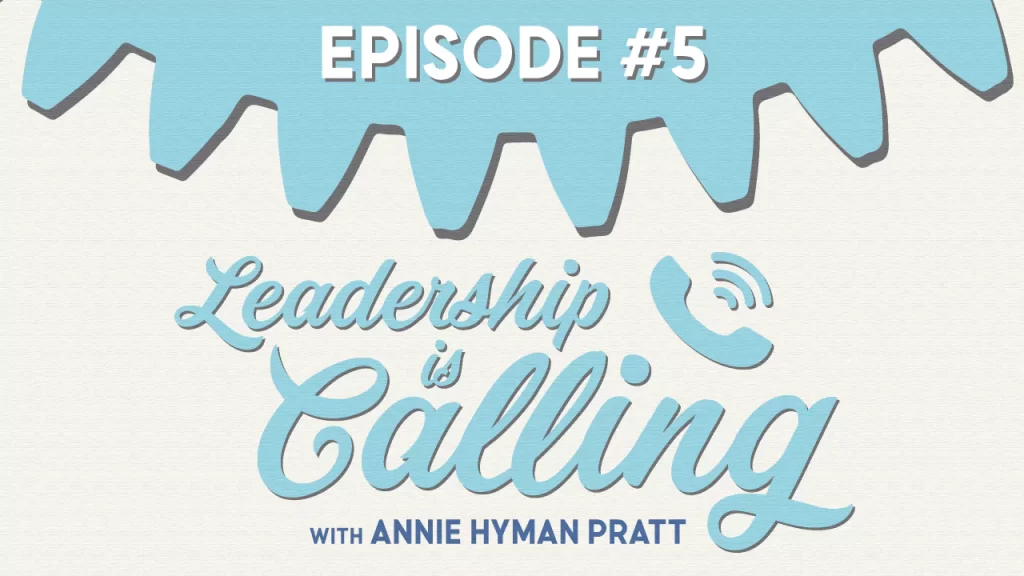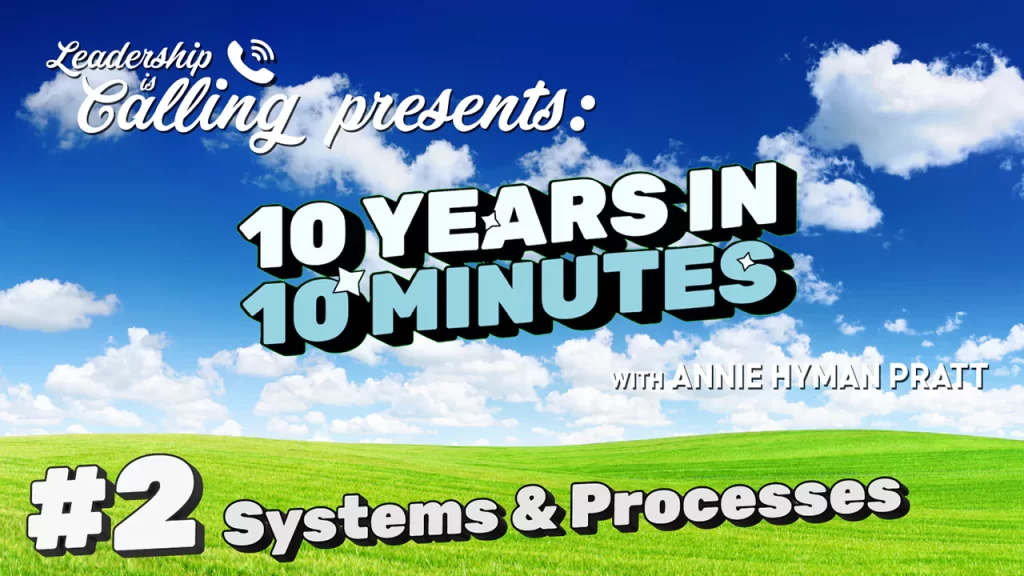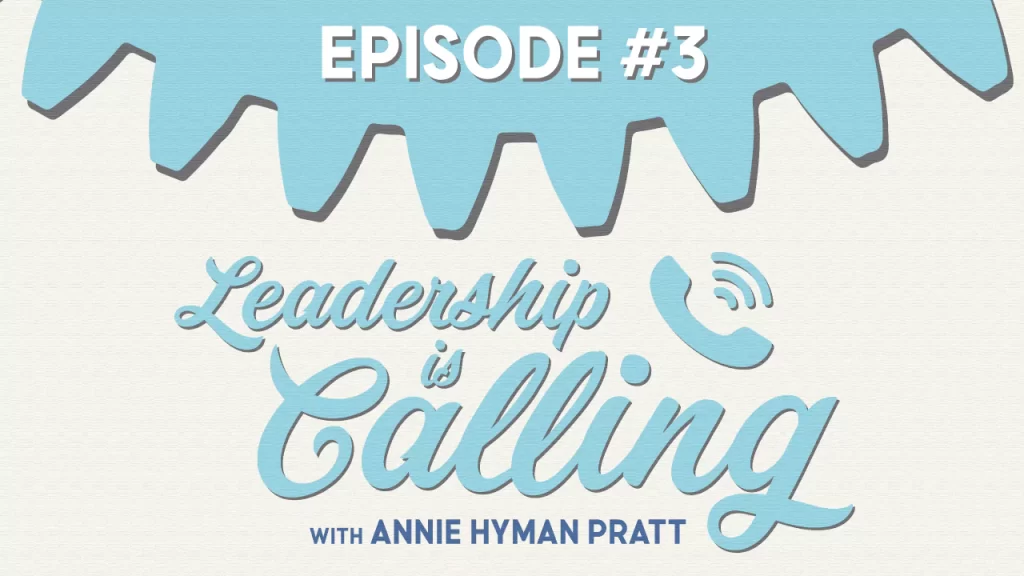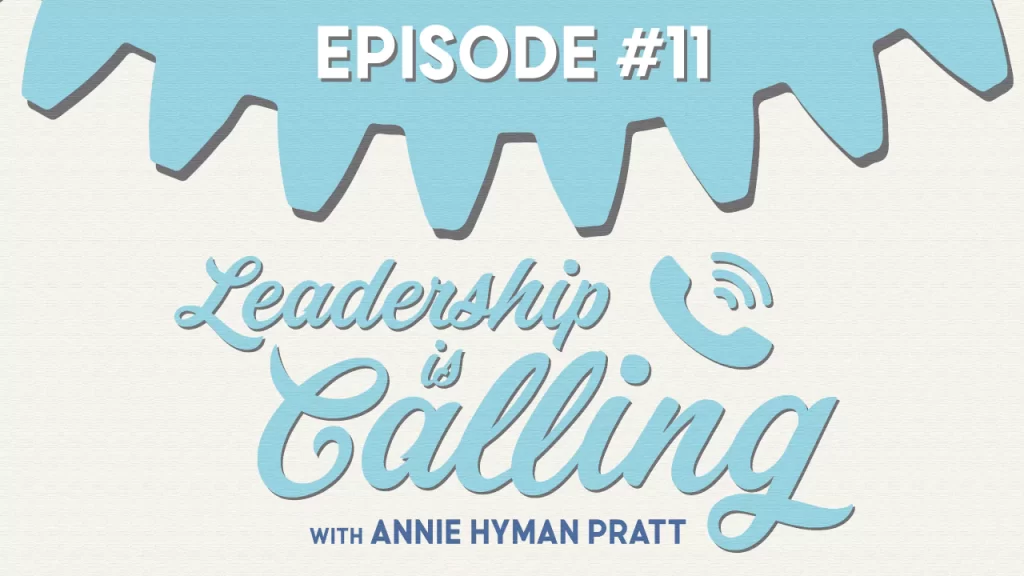Episode #18: Moving From Taking Control To Giving Control
Leadership is Calling Episode #18, 10 Years in 10 Minutes Series #7
Annie Hyman Pratt
- Description
- Transcript
Moving From Taking Control To Giving Control
“Following this process allows employees to become highly effective partners capable of taking on responsibility and authority.” -Annie
On this episode of Ten Years in Ten Minutes with Annie Hyman Pratt, Annie discusses knowing when to take and give control to your employees as they grow from trainees to highly effective team members.
Annie shares the importance of empowering teams by giving them more control and responsibility. She explains that the old top-down authority model no longer works due to fast-changing business environments. Leaders now need to train, coach, and mentor employees step-by-step to develop competence and trust before handing over control. This involves moving from hands-on training to side-by-side coaching to less involved mentoring. The key mistake leaders make is rushing from coaching to full control without sufficient mentoring in between. Following this process allows employees to become highly effective partners capable of taking on responsibility.
Key Points
- Top-down authority doesn’t work anymore due to fast changing business environments.
- Give control to leaders and teams who are highly effective and can take full responsibility.
- Train, coach, and mentor people step-by-step to develop responsibility and competence.
- Don’t go from coaching to full control without the mentorship phase in between.
Related Resources
More information: The Business Part
Articles: The Control Trap! |. True Collaboration: The Best Results Are Team Driven
Downloadable Infographic: The Key Basics of Agreements
Auto-Generated Transcript – unedited version
Moving From Taking Control To Giving Control
Today I’m talking about leadership and management, the part that is about taking control and um, you know, doing things for people. Uh, some people might consider this to be micromanaging. It’s the part where you know you’ve got to do a lot versus giving control versus when you can really rely on others, other leaders and your team to actually get things done, uh get things done well without you having to step in and do any of it or you know, watch them closely or catch their mistakes, etc.
Okay, this is always kind of an interesting topic because the old way in business is to use a lot of top-down authority, authority and control right? So it’s like the people at the top have all the answers and uh and they know what to do and they’re the best thinkers and they are going to tell everybody else what to do and how to do it. So that means that everybody else is kind of like hands, you know we get their hands, we we we make sure that they’re I guess pretty decent listeners and and they’re as good as the direction they get. All right, so in today’s day and age taking control or having a company that has a very high level of kind of command and control top using top-down authority, that doesn’t work anymore because the the biggest biggest reason why it doesn’t work anymore is because the environment, the external environment changes too fast.
Where it used to be you know that you could have like an industrial mogul who could you know think of how to um do a country of you know uh trains railways or something you could have a few smart guys figure it all out. That does not exist anymore. Now things change so fast that just you know one or two smart people at the top, they cannot know everything and they cannot see the changes that happen so fast and process it and actually you know uh take in all the new information by themselves. Even with great communication, you know even when people are pretty good about taking the information that they um hear and learn and transferring it up to the top, it’s just a highly controlled environment. It just doesn’t work in business, it can’t. It’s not smart enough and it can’t change fast enough.
You don’t have one brain and a ton of hands, um and it just doesn’t work. Okay, so we want to get to the part of where we can actually give control to our leaders and team so that we can all go together for goals and trust that the people that are you know doing their parts can actually do the right thing. And when I say give control what I mean is that you have people who are highly effective for full responsibilities for outcomes.
So what that means is that you have somebody who is really clear on the outcomes, very competent in what they do, that you can trust that not only will they get the result but they’ll catch their own mistakes, they will come to you and tell you if something has changed and they can’t achieve the goal. You can trust that they will have really good judgment for you, you know if something got planned that’s not going to go well, that they can make the right changes and decisions for how to get it back on track without messing up the rest of the company right? Or without messing up the rest of the goals.
So what we’re looking for here is people that are really effective for taking full responsibility so that as the CEO or as a leader who is supervising a person that you’re giving a lot of control to, that you can take that responsibility out of your day-to-day brain. You don’t have to think about everyday how that project is going, is that person going to get the results. You know that they’re either going to get the result or they’re going to come to you super early with what’s changed and you guys are going to work together to come up with a new plan. Okay, making sense? Makes sense.
That’s when you give control. The issue becomes that uh, so many of us leaders who have grown up in a world that really was top-down authority and have grown up in a system, really an educational system that um did not give us a lot of control. Okay, we tend to think that this is um binary, that you either take control or you let somebody completely do whatever they want. Okay, so in business that doesn’t work and certainly uh, I have met so many leaders and team members who are like you know, I have a boss and they are way too controlling and micromanaging and they have to just stop it, they have to just you know let go, let go, just let us do it.
Okay, so um the reason that they don’t do that is because if they just do that without the process that comes in between here, what happens is the results don’t turn out because people actually need to be ready to be to take on all that control, to be to take on the um the uh responsibility of getting the results. Okay, so the things that come in between, that’s the important part because that, I feel very strongly that most leaders, they don’t really understand especially in today’s day and age when emotional intelligence is is very much valued, where people care about the environment, where um a highly controlling, um you know very highly critical, uh micromanaging environment is considered totally toxic. Right, it kind of is very hard to perform when you’re being controlled to uh you know to the nano level.
Okay, so what we want though is an environment where we train and develop people to get to like giving them control. So to do that what we have to know first is where are people, where are they in their level of competence, in their level of ability, in their level of able to take responsibility, right? So the first level is when people are you know usually they’re um they’re new or training. That means that when people are new or maybe they’ve even switched roles or they have something new that’s come into their role, it’s like we have to train them. We have to train them until they’re a certain level of competence and this training and to think of it as training and teaching right, very hands-on training, teach, very hands-on.
This is when you don’t leave people alone, you are pretty darn controlling because they need to learn. They don’t know, they don’t have good judgment yet. Um, this is when you are doing a lot of things side by side, this is when you are doing some explaining, you, you don’t let them just um, you know, put things out there without a lot of review, without a lot of going through it. Okay, great, so that’s the first step.
First step, if you have somebody that is not new and knows you know a good amount of things about their role or their responsibilities, the next level is that you need to coach and support. Okay, coach and support. I think of this also as kind of the, you’re gonna supervise them pretty strongly because they’re not newer training. They got a lot of stuff. Okay, however at this second level they aren’t able to catch their own mistakes. They aren’t able to handle something going differently than they were taught. They don’t have enough experience to engage in a level of critical thinking where they could, you know, figure out what to do when there’s a change or when something goes very differently than planned.
This is a level where people need a lot of practice and they need to be doing it. Here you’re going to do a lot of things side by side. You may even do some things for them. You’re gonna, you know, be very hands-on here. You’re not hands on, we got to have them do it but you’re right with them to coach, to support, to catch the mistakes, to help them learn new things, right? To help them really get good experience and as they’re getting that um and you’re supervising them then you are getting them ready for the next level and that is where you mentor them.
Think of this as knowing very much the mentorship role. Okay, the mentorship role is way less hands-on because here they are starting to really catch their own mistakes. Here they’re coming to you as a resource. They’re like hey, I think this thing isn’t going exactly as planned and here’s my idea for what I should do differently. And you’re like yeah, that’s awesome. Or you’re thinking, you know, or you’re working with them to be like oh you forgot about this other thing that also needs to happen.
Okay, so this is where you’re going to be uh mentoring them. This is where you are solidifying and gaining confidence in them, they’re gaining a lot of confidence in themselves. This is very hands-off. This is like they got it but you’re still, you’re still checking it or I should say differently, they’re checking in with you. They’re making sure that they’re letting you know that they do got it right? They are also at this level often doing some training or coaching and supporting the people um below them, right? The people working with them.
So when we get through these levels and we get somebody to the point where they are, I’ll just say highly effective, you know, trustworthy with a responsibility, that’s when you get in control. That’s when you actually can totally, you know, not think about um if this is going to happen or not happen. This is when you very much have a business partner that um, you know, that they have, uh they they have earned and developed to a level where they’re right with you in what they can do.
If the biggest mistake that business leaders make when they’re going through this process actually is that they do the new and training part, sometimes they miss it when people change roles or add new functions. Okay, but um where they get to this level of coaching and supporting people and then at that point they decide I think they’re ready, I think I can just totally give them control and then things don’t go well.
So getting people from this level right to this level requires mentorship. This is the part that we can’t skip. This is the part that we want you to embrace as a real level to develop through. So that you, you know, you get somebody who actually is absolutely a rock star and can partner right with you. And that’s what I want you to know.
It took me more than 10 years to figure out. I think I promoted a lot of people to a highly responsible role that was you know and after only kind of coaching them for a bit. I had to learn the hard way. So I want you to know that now and I, uh hope this was helpful. To learn more about this episode’s topic, pick up a copy of my book The People Part.
Thank you.


